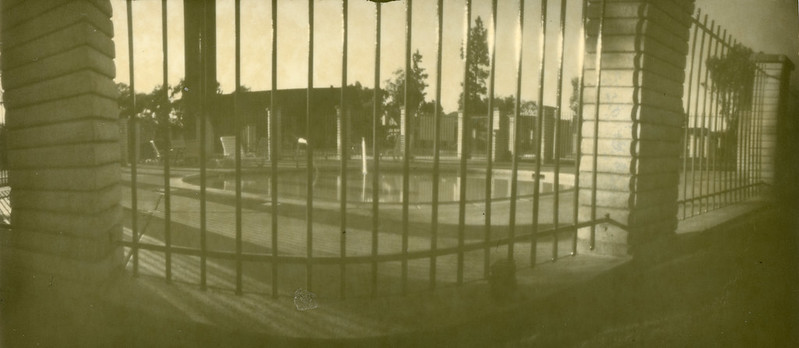So, I wanted to make the film follow a path that would maintain a constant ratio of the focal length to the apparent opening. The problem is that the apparent opening is not constant. The opening is a cylinder. As an extreme example, think of looking through a tube like what is used for bathroom tissue. If you look straight down the middle, you see a circle, but as you move your head to the side, the circle starts to get 'squeezed' into a sort of football shape until it is just a tiny sliver and then finally disappears all together. So the opening is getting smaller as the angle of view changes from 90° to 180° or to 0°. I had to enlist the help of a mathematician friend to get the formula for calculating the opening. Here is what he came up with...
EA = x - y*tan(Θ)
where EA is the Effective Aperture (really it's the lateral diameter of the eliptical shape)
x = diameter of the pinhole
y = thickness of the material
Θ = the angle at which light enters the pinhole
So, I plugged this formula into handy dandy Excel and calculated EA for every angle from 0 to 90. Then I figured the zero case where the EA=x and the focal length is 65mm. That gave me a value of f/217. Now I just needed to calculate focal lengths for the rest of the angles. What I eventually came up with was something roughly elliptical with the pinhole at one end.
I will talk about the actual construction of the camera in another post, but for now suffice it to say that I didn't get the film winding mechanism right in the first version, so I ripped it out and just put in a film path that would work for paper. I bought some Ilford Harmon Direct Positive paper and cut a piece to size. The paper tech sheet said that it rates around iso 3. I took a reading with my handheld light meter and got the EV for the scene so I plugged that into the pinhole exposure calculator and got 61s.
I developed the paper in Caffenol-C-L and here is the image.

There is good detail in the shadows and the highlights aren't really too blown out, so I am pretty pleased with this image. There is still some fall-off on the right side, so I will need to investigate why that happened. The white blotch near the bottom was something on the glass of the scanner. The mottling of the sky is because of the staining of the caffenol, but I kind of like the look. I will eventually build a 'film' version of this, but for now, I think this is a good working model of what I was trying to accomplish. Let me know what you think.
No comments:
Post a Comment